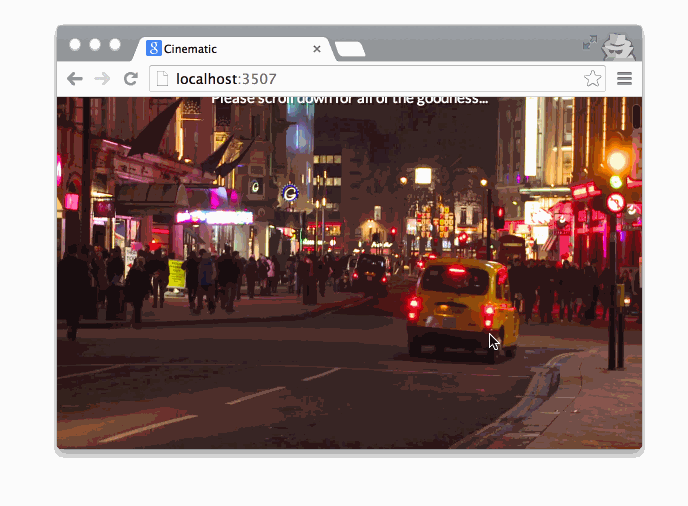Cinematic.js



- Heroku: http://cinematic-js.herokuapp.com/
- Bower:
bower install cinematic

Getting Started
Simply define your video element by adding it to the DOM as usual, and then add the data-cinematic flag:
Cinematic.js will then pick up the video and determine how to seek in the video based on the ratio to the scrollTop property and the document's height.
Note: It's entirely up to you to render the video – see using ffmpeg; any stalling in the seeking of the video is — most likely — a video encoding problem, and not a problem of the Cinematic.js module.
In the example, Cinematic.js comes with LeicesterSquareHigh.mp4 and LeicesterSquareLow.mp4 where the difference between the two in terms of file-size is significant, whereas the quality isn't too noticeable.
Happy experimenting!
Using ffmpeg
The most important aspect of the library is the video itself – it must have a generous number of keyframes, which can be defined by experimenting with the -g flag:
ffmpeg -i input.mp4 -g 10 output.mp4
Try experimenting with the -g flag to achieve a compromise between file-size and the quality. Another flag that you can experiment with is the -crf flag which relates to the video's constant rate factor – this ranges from 1 to 51. You can try changing the value to achieve a satisfying compromise:
ffmpeg -i input/mp4 -g 10 -crf 40 output.mp4
